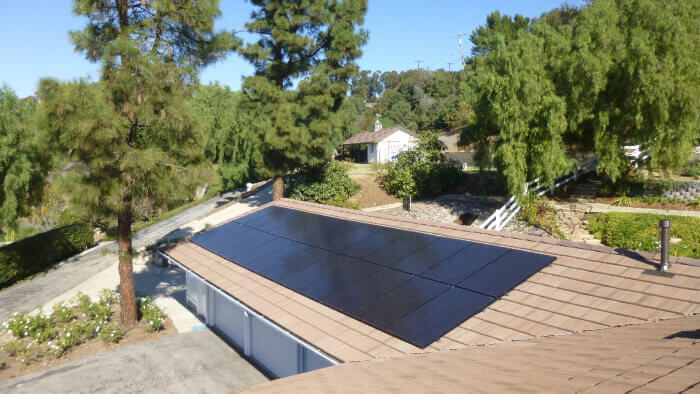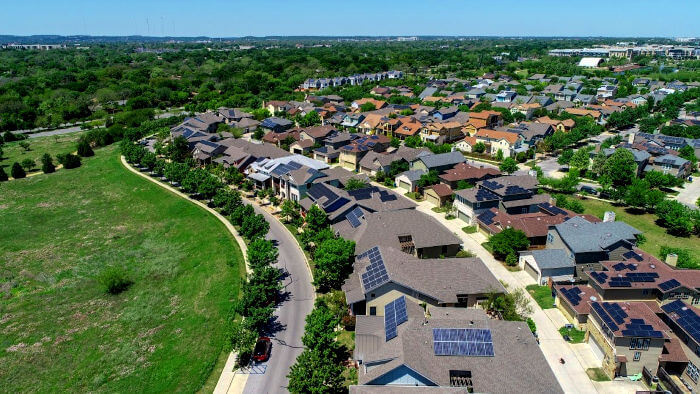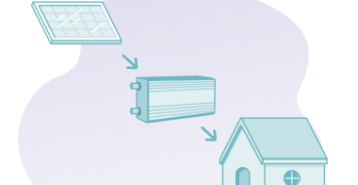One of the first questions homeowners want to know when deciding on whether or not to go solar is, “How many solar panels do I need?”
The number of solar panels your home requires will affect the total project cost and your initial investment. It is also very personal and unique to your home and household.
Calculator for Solar Panels
Above, you’ll find our calculator to determine how many solar panels your home needs. We just need to know your home’s size and the zip code it is located in — we take care of the rest using average estimates of wattage needs (though you can also enter an exact value).
Below, we lay out the calculation we’re using behind the scenes to arrive at this number. You can use it on your own if you want to, or you can play around with numbers in the calculator itself.
Once you know how many panels you need, you’ll have a good starting point for estimating a total project cost.
How to Calculate the Number of Solar Panels for Your Home
If you want to answer the question “how many solar panels do I need?” or if you’re just curious how our calculator for solar panels works, here is what you should know.
We use your zip code to find your area’s number of peak sunlight hours and we estimate how much electricity you need based on average amounts for your home size. These averages are an important part of figuring out just how many panels will power your own home.
To replicate this, you will need:
- Your household’s average daily electricity usage.
- The average number of peak sunlight hours your home receives per day.
- The wattage of the panel size you intend to buy.
Formula For Finding How Many Panels You Need
Here is the calculation, which we will explain below in more detail:
Average daily electricity usage / Average daily peak sunlight hours = System size
System size x 1000 / Panel wattage = Number of panels you need
How to Find Your Average Daily Energy Usage
For your average daily energy usage, review your most recent electricity bill — some utility companies offer a running average or the last 12 months of usage information. If the last 12 months of usage are not on your bill, it may be available in your online account or by calling your utility company.
Your Region’s Peak Sunlight Hours
How much time your home is exposed to the sun’s highest intensity, or your home’s peak sunlight hours, will factor into the number of panels your solar project will require. Peak hours vary by geographic region, and some states are more economical for going solar than others.
Knowing the range for where you live is important and can even save you money. Typically, the more peak sunlight hours your home gets, the fewer panels you will need. The National Renewable Energy Laboratory provides state-by-state peak sunlight hours information. To get a more accurate number based on your home’s address, contact a professional solar installer.
Finding Your Panel Wattage
Finally, you will need to know the wattage output of your desired solar panel for your system. Wattage will vary depending on panel size and how efficiently it is converting solar power into electricity. Panels typically range from 250 to 400 watts. You will need to multiply your system size by 1,000 to convert to watts, then divide by your desired panel wattage.
How Many Solar Panels Does it Take to Power a House?
Now, let’s put that all together with a concrete example.
For this example, we will use an average home size of 2,000 square feet.
A 2,000-square-foot home consumes an average of 11,604 kWh per year or 31.8 kWh per day.
The average number of peak sunlight hours varies by state. Let’s take Kansas as an example. Kansas has an average number of peak sunlight hours from 4 to 5.5.
For solar panel wattage, you should first know that panel wattages range between 250W and 400W. The midpoint between the two is 325W, so we can use that for our formula.
Here is the equation with the numbers plugged in:
31.8 kWh / 4 hour = 8.0 kWh system size
Number of panels = 8.0 kWh x 1000 / 325 W
Taking both of those peak sunlight hour numbers above, we now know for a 2,000 square-foot home in a region that experiences warm summers and mild, snowy winters, you can expect to budget for 19 to 25 panels.
Factors Influencing How Many Solar Panels You Need
Your home’s exact solar panel requirements may be more or less than our calculator predicts depending on a few important factors.
Geographic Region
Where you live matters when it comes to going solar. As mentioned above, the average number of hours of peak sunlight your home receives each day will affect your home’s panel requirements. Not to be confused with daylight hours, peak sunlight hours represent the amount of time the sun’s intensity is greatest. For example, you may see seven hours of daylight where you live, but your peak sunlight hours may range from three to five.
Solar panels produce the optimal amount of power in direct sunlight. Typically, the more peak sunlight hours your home sees each day, the fewer solar panels it will require.
Home Size
The size of your home also determines how many solar panels you will need to include in your project budget. It takes more energy to heat and cool a larger home than a smaller home. Home layout may also be a contributing factor. A sprawling single-story home may be able to accommodate fewer and larger solar panels, whereas a modest-sized, two-story home with less roof space might need a combination of larger and smaller panels.
Roof Configuration
Roof pitch and home orientation play an important role in your solar panel system. Solar panels should be installed at an angle of 30 to 45 degrees. This range is similar to the average slope of most homes, which falls between 20 and 40 degrees.
Panel orientation is arguably more important than roof pitch. In the United States and the northern hemisphere, solar panels should face south to receive the optimal amount of peak sunlight and produce. Solar arrays that face east or west produce on average 20 percent less energy than southern-facing systems.
Your Home’s Electricity Requirements
How much electricity your household uses annually should be included in your solar panel calculations. This is especially important if you want your solar system to 100 percent offset your average consumption.
Every household is unique and has different energy needs. For example, taking the same 2,000-square-foot home, a two-person household typically consumes less electricity than a family of four. Your home’s total energy requirements should factor in the following:
- The number of people in your household. The more people who live in your home, the more electricity you will need.
- Other home appliances or features. An air conditioner, electric vehicle charging station, pool, or spa will all increase your daily average electricity requirements. Moreover, if you have or plan to build an accessory dwelling unit (ADU) or multigenerational suite, you will need to include that electrical footprint, as well.
Panel Size and Output
Most residential solar panels range between 250 and 400 watts, with 300 watts being the most common. The higher the panel power output, the fewer panels your home will need. For example, a home that requires a 6,000W system will need approximately 24 250W panels or 20 300W panels.
Solar Panel Types
The type of solar panel you choose will also affect your final project size and cost. Most residential solar panels are photovoltaic (PV), which means they are constructed from several photovoltaic cells that harness sunlight and convert it into direct current electricity. You can read all about the three different types of PV panels, but here is what to know in brief:
- Monocrystalline: Most residential solar panels are manufactured using this method.
- Polycrystalline: Less efficient and produce less power, but also cost less per panel.
- Thin-film: Most commonly used in commercial and industrial installations.
Solar Panel Key Takeaways
The number of solar panels required to power your home will depend on where you live, your home size, and household energy consumption. You also must consider whether or not you want a solar array to offset all your electricity usage and the wattage of the panels you intend to buy.
The most accurate way to figure out how many solar panels your home requires is by contacting a local and professional solar installer who can customize a quote specific to your needs.
Compare top-rated solar pros in your area.
Read real homeowner reviews, explore qualifications, and view promotions. Modernize makes it easy to browse professionals and find one that will be perfect for your project.









